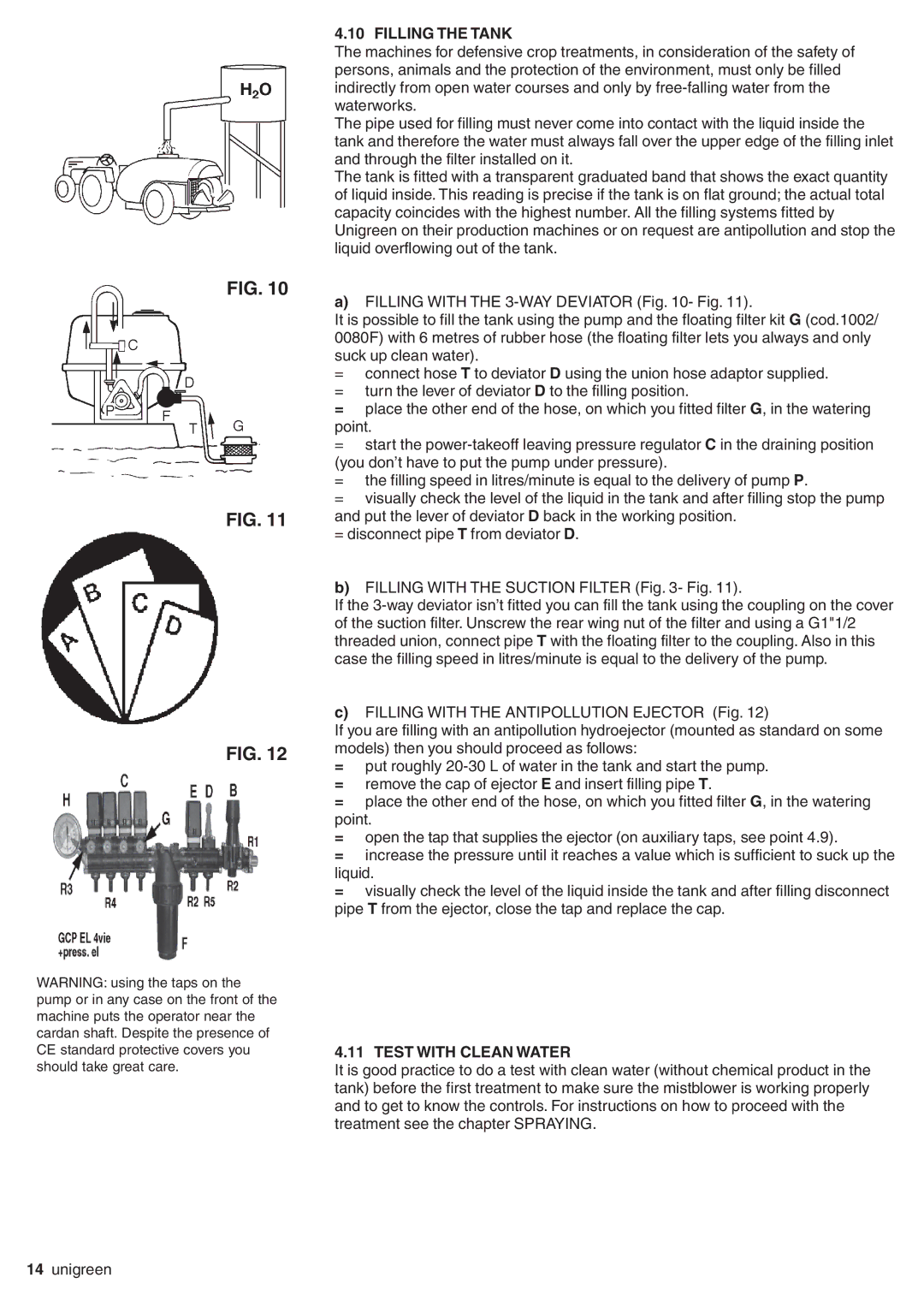P400, P300, P500, P600 specifications
Unigreen is a leading manufacturer in the agricultural machinery sector, known for its innovative solutions that meet the growing demands of modern farming. Among its impressive lineup, the Unigreen P400, P300, P600, and P500 series have garnered attention for their advanced features, cutting-edge technologies, and exceptional performance.The Unigreen P400 is a versatile sprayer suitable for medium to large-sized farms. One of its key features is the high-capacity tank that minimizes the need for frequent refills, allowing farmers to cover substantial areas in a single pass. The sprayer is equipped with advanced precision technology that ensures uniform application of chemicals, which is crucial for maximizing crop yield while minimizing waste.
On the other hand, the Unigreen P300 is designed for smaller operations but does not compromise on performance. It boasts a compact design that makes it easy to maneuver in tight spaces. Its lightweight construction facilitates transport, and it incorporates user-friendly controls that enhance the operational experience for farmers. The P300's efficient spraying system reduces drift, ensuring that chemicals are applied exactly where needed, thus protecting the surrounding environment.
Moving onto the P600 model, this sprayer is engineered for large-scale agricultural operations. It features an extensive range of customizable options that cater to specific farming needs. The P600's robust build is complemented by powerful engines that ensure reliability even in demanding conditions. Additionally, it incorporates state-of-the-art GPS and automated guidance systems, allowing for precise inter-row spraying and reducing overlap—this significantly improves efficiency and decreases operational costs.
Lastly, the Unigreen P500 bridges the gap between the P400 and P600, offering advanced technology in a slightly smaller package. One of its standout characteristics is the innovative boom design that provides exceptional stability in various terrains. The sprayer includes advanced monitoring systems that track performance metrics in real-time, enabling farmers to make informed decisions while in the field.
Overall, the Unigreen P series sprayers are distinguished by their user-centric designs, technological advancements, and high-performance capabilities. Their commitment to sustainability and efficiency makes them an excellent investment for progressive farming operations looking to enhance productivity and optimize resource use. Unigreen continues to innovate, ensuring that their products remain at the forefront of agricultural technology.

